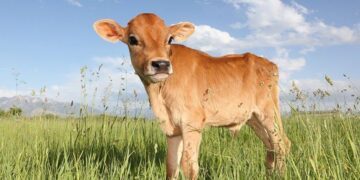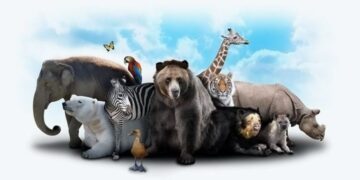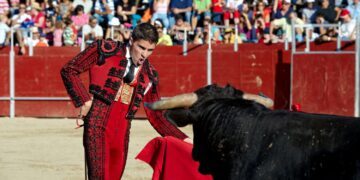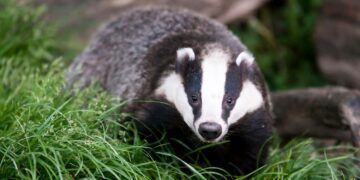Cows play a crucial role in people’s lives, whether it’s for spiritual or commercial reasons. They’re also just really adorable!
But what if I told you that they unintentionally destroy our planet?
Here, you’ll discover why that’s the case, along with other interesting facts, ranging from why certain religions don’t eat their meat to all kinds of fun cow-related statistics.
So, before you moove on to greener pastures, take a look at these cool cow facts!
For everyday purposes, we often incorrectly use the term “cow” to describe both male and female forms of Bos taurus, or cattle.
In reality, though, it’s just female cattle that are cows; male cattle are bulls. To complicate it further, young female cattle are heifers, and young bulls are oxen or bullocks (until they’re castrated, when they become steers!)
Johne’s disease, a disease typically found in dairy cows, causes chronic diarrhea, immense weight loss, and a decline in milk production.
Cows can’t produce milk without becoming pregnant, and they can only give birth once every year!
Cows are ruminants, which are basically herbivorous animals that bring back swallowed food (the cud) into their mouths to chew it again till it becomes easily digestible.
While cows do have both upper and lower teeth, their upper teeth are covered by a dental pad. This feature is common to all ruminants, like goats and sheep, as it helps them chew the cud.
Believe it or not, eating cow tongues can be nutritious. They contain lots of iron, zinc, and protein, at about 0.58 ounces (16.4 grams) of protein per 3 oz (85 g) serving!
In 2015, cows became Nepal’s national animal. As a result, slaughtering cows in the country is forbidden.
Numerous Indian religions also forbid the taking of cow’s lives for religious and spiritual purposes. For example, Buddhists believe that protecting animals and living a plant-based diet will bring good karma in the afterlife.
There are about twice as many cows in New Zealand as there are people, with around 10 million cows and 5 million Kiwis!
When cows burp, they emit a greenhouse gas called methane, which harms our environment. Some farmers are mitigating the methane produced by cows, though, by adding seaweed to their food.
Cows have different lactation cycles, and the milk they produce is different in each cycle. For example, cow milk from the late-lactation cycle is lower in lactose and higher in protein!
Certain Indian states, like Punjab and Haryana, have an interesting tax called a cow cess. It’s typically imposed on luxury goods, and the proceeds support stray cows and other animals!
About 65% of leather goods worldwide are made from cowhide, and India is ironically one of its largest producers.
Every second Tuesday in July, the importance of cows is recognized as people worldwide celebrate National Cow Appreciation Day.
Cow manure is one of the best organic fertilizers, as it’s rich in crucial nutrients like nitrogen, phosphorus, and potassium.
Grasses, legumes, and alfalfa are just some of the foods in a cow’s natural diet. On a daily basis, these herbivores are able to eat around 24-26 pounds (11-12 kilograms) of food!
Cows tend to weigh less than bulls, typically around 800 to 2,400 pounds (363-1,088 kilograms), as opposed to about the typical bull’s 1,000 to 4,000 lbs (454-1,814 kg).
While cow’s milk often appears white, it can sometimes take on a yellowish hue when it’s rich in carotene, a natural pigment found in plants.
The average lifespan of cows is 15 to 20 years. The oldest cow on record was Big Bertha, who lived to the ripe old age of 48 years and 9 months in Ireland!
Most cows don’t live past six years old, though, as they stop producing milk around this age. After this, they’re sold for meat.
Cows are dichromatic creatures, meaning they can’t distinguish red and green. To them, those colors just look like a mix of yellow, brown, and gray.
As of 2023, the US Department of Agriculture (USDA) estimates that there are around 1 billion cows worldwide!
Cows are often dehorned to prevent them from injuring farmers or other cows. Nonetheless, its process is quite painful as doing so requires using things like hot irons, blades, and caustic acid!
Out of all the breeds of dairy cows, the Holstein cow is the most popular one due to its high milk yield! The downside to Holstein cow milk is that it contains less fat and protein than other breeds.
In 2011, scientists from China and Argentina genetically engineered 300 cows to produce milk that’s nearly identical to human milk!
A cow’s water intake depends on whether it’s producing milk or not. For dairy cows, they need about 30-40 gallons (113-151 liters) of water daily, while 9-12 gallons (34-45 L) can be enough for dry cows.
According to a language specialist at the University of London, different cows have distinct accents when mooing, which is influenced by a cow’s herd.
Milking cows at night leads to milk with higher levels of tryptophan and melatonin, both of which are essential for improving sleep!
Typically, cows can only produce one gallon (3.8 L) of milk per day. With genetic modification and a strategic diet, though, they can produce up to 6-7 gallons (23-26 L).
Believe it or not, beauty contests for cows are regularly held in Oldenburg, Germany. Judges pick the winners based on factors such as how strong their legs are or even how full their udders look.
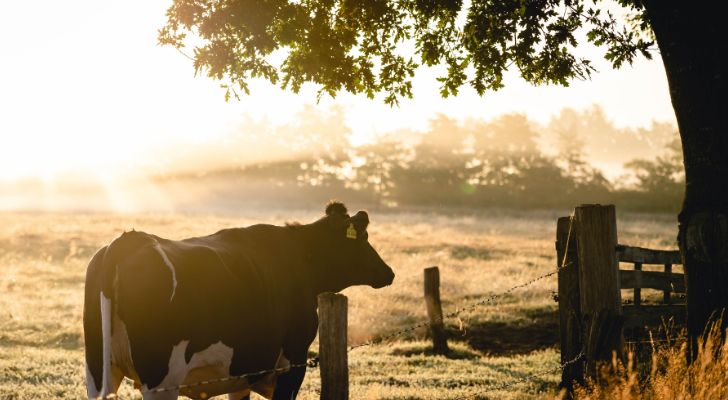
There’s no doubt that cows are an essential commodity. But let us not forget that they’re living beings, too!
They can feel pain, just like we do, and it hurts to know that some greedy businesses ignore this.
So, if you’re going to continue to buy cow-related products, remember to support those who farm them ethically.


